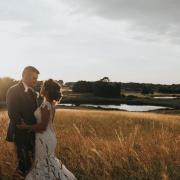Follow our step-by-step guide and enjoy a stress-free wedding day
1 Set the date
Decide on a date for your wedding but have a couple in reserve in case you can’t get your first choice. Think about the time of year you want to get married. Summer is still the most popular but that doesn’t guarantee the weather so consider other seasons, it could also save money.
2 Book the venue
Once you have decided on the date, you’ll need to consider what type of ceremony you want. This could be a religious ceremony in a church or a civil one at one of the many venues in Kent.
3 Plan the budget
When you add up the cost of all you need and want for your special day, it can seem overwhelming. Plan a budget that won’t leave you in debt for years to come, but be realistic. Always allow a little extra in the budget for the unexpected.
Remember: setting a budget for each individual item is as important as the total budget; you’ll be less likely to overspend.
4 The wedding planner
A wedding planner’s role can be as varied as you like, providing as much or as little help as you desire. They can advise on everything, from help with budgets to searching for that dream venue. They will have key contacts, offering you peace of mind and in some cases, financial discounts that you may not have got alone.
5 The toastmaster can help
Hiring the services of a toastmaster adds something special to a wedding reception, especially if you’re after a more traditional affair. Duties can be liaising with the photographer, videographer, entertainment, banqueting personnel and guests. They will communicate with the bride and groom and guide them through the day, make all announcements, advise on speeches and introduce the couple.
6 Be organised
If you have an idea of what you want the most, and the least, you will be able to set a budget accordingly. Invest in a notebook that you can fill with ideas for the day, supplier contacts and pictures.
7 Seating plan
The correct seating for the head table is: bride and groom at the centre, the bride’s father to her left, then the groom’s mother and best man. On the bridegroom’s right will be the bride’s mother, then the bridegroom’s father and chief bridesmaid.
8 The speeches
Traditionally, the father of the bride toasts the bride and bridegroom, the groom responds and proposes the toast of the bridesmaid(s), the best man responds and may propose a toast to the parents.
Speeches are generally made after the wedding breakfast, when everyone has been seated for a while, so keep them at around 10 minutes each. That’s more than enough time to engage the audience, create a few giggles and some lasting memories.
Top tip: During the best man’s speech, guests love to be entertained with gossip about the groom, so do your research and speak to friends and family. But know your bride and groom well as to how far your jokes can push. It is essential you know your material too and if you ensure you’ve read through your script several times in the lead up to the wedding your nerves won’t get the better of you. Try standing in front of a mirror and read your speech out loud or you can record yourself on a digital recording device and have a listen back.
9 Internet
The internet is one place that can give you an idea of what you should be paying for.
It’s a great tool for requesting quick quotes for venues, suppliers and various other necessities for your wedding.
The internet also hosts some fantastic websites which can provide you with downloadable check-lists and gift-lists which you can set up for free and have a specific link you can send to your guests.
Why not save some money by inviting any of your long-distance or overseas relatives and friends via Facebook?
People will be able to RVSP with the click of a button – and it’s free!
10 Take time to enjoy it
Make sure you make time for each other alone, even if it is only for 10 minutes during the day. It will all go so fast, so it is important to take a few precious moments out to soak it all up and remember just why you have married. n



























